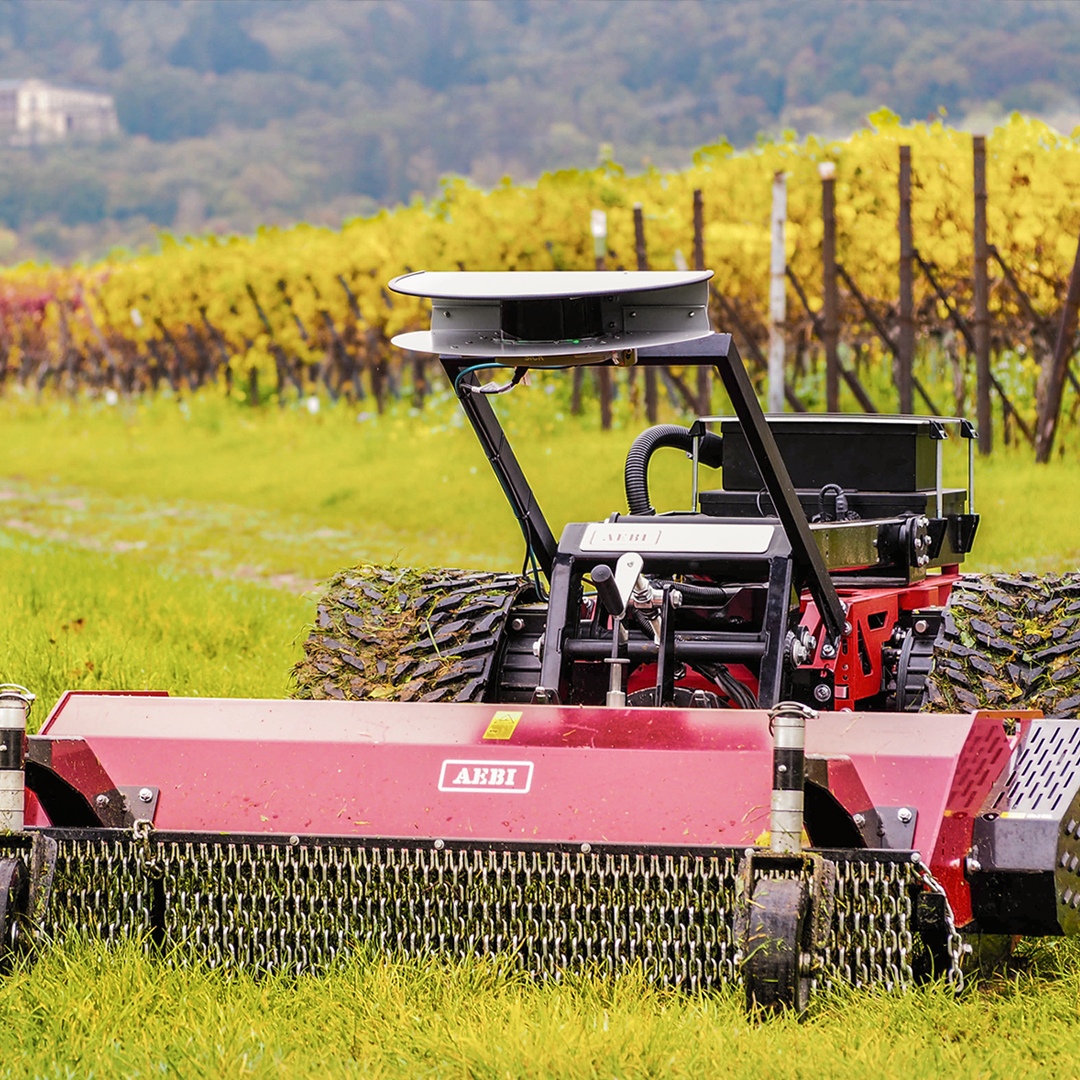
Magazine for the Annual Report
Revolution in the field

The digital transformation of agriculture forges ahead inexorably, and SICK has courageously opened up new business fields here with its internal Mobile Outdoor Automation start-up.
The green vineyard tractor quickly clatters along the rows between the vines leaving a small cloud of dust behind it. Automatic guided attachments at the back and front ensure efficient and environmentally friendly removal of weeds. The driver relaxes as he sits on his tractor, because sensors from SICK maintain tracking and reliably monitor the vehicle’s position. He only has to keep his foot on the gas – the rest takes care of itself.
This winemaker in Baden-Württemberg is not alone in having already taken the first steps from traditional cultivation towards ‘Viniculture 4.0’. And agriculture in general is converting to ‘Farming 4.0’. On the one hand, a growing world population and demands for good living and sustainability; on the other hand, the loss of agricultural land due to climate change and urbanization: Bridging the gap here requires new technologies, and thus state-of-the-art technology. “Self-driving machines and agricultural robots are a major, rapidly growing, market. We have been active here for several years. Our internal start-up has already been active for two years. We are now working on many projects with leading vehicle producers,” explains Manuel Fischer, Strategic Industry & NPI Program Management Lead Mobile Automation.
Co-engineering is the key
SICK’s Start-Up Initiative is also a new model for partnership-based collaboration with customers. The New Product Introduction (NPI) approach has been specially developed to enable the sensor specialist to focus on customer requirements – with co-engineering as a key element. Cooperation goes far beyond a single project, and is a strategic collaboration intended to last for the duration of the customer relationship. Joint co-engineering continues even after completion of a project with serial production – to achieve continuous improvement until the next innovation. Whereby the NPI Program Manager acts as the co-engineering interface.
There is also well-coordinated cross-departmental collaboration within the company. Success and the very positive customer feedback validate this innovative approach. SICK sensor solutions can now be found in many semi-automated and fully autonomous machines and robots on fields, farmland and meadows all over the world. SICK’s own Outdoor Technology Center, with a testing area of 3,500 m², enables optimum preparation of the sensors for this type of harsh and complex outdoor use.
Ultimately, under real operating conditions, the vines can be detected and the attachments controlled using the information provided by the robust multi-layer scanners. This enables mechanical and ecological removal of weeds with little or even no spraying. Tilt sensors detect movements, supporting accurate tractor navigation. Stereo cameras for 3D monitoring of the surroundings act as sensory organs, warning the driver before any collision can occur. And the start-up has even developed functional safety sensor systems to ensure the safe operation of such mobile machines. If desired, the sensors can also transfer their data to the cloud for the digital representation of work processes.

New work-life balance
“Customers can rely on our technology,” underlines Fischer. SICK’s daring approach for new sensor solutions in the agricultural sector also contributes towards more and more farmers finding the courage to take up agricultural automation potential. And courage is required because farmers must order their machines at the start of the year, before the first seeds are sown. Then everything must function properly to bring in the harvest. Once the new technology is actually in the farmyard it is often used soon afterwards, almost intuitively, and can lead to a completely new work-life balance. Ultimately, the safety, performance and comfort aspects are already familiar from one’s own car. Agricultural vehicles actually already have an edge in this regard: Combine harvesters and other large equipment often have more digital helpers on board than cars do. Fischer believes that this revolution in the field is unstoppable: “The future lies in autonomous machines combined with cloud-based communication solutions – and intelligent sensor technology from SICK.”







